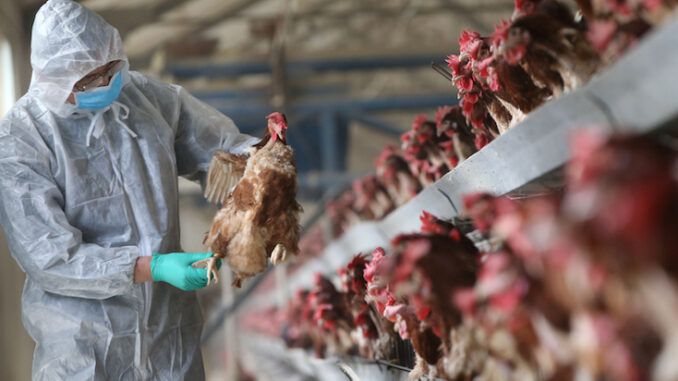From NewsPunch.com…
Is it a coincidence that as the world finally gets back to normal, we’re suddenly seeing warnings of another pandemic on the horizon – bird flu, aka avian influenza (H5N1).
In a March 30 CenterPoint interview, former Director for the U.S. Centers for Disease Control and Prevention, Dr. Robert Redfield, stated the following:
“I believe the great pandemic still in the future, and that’s going to be a bird flu pandemic for man. It’s going to have significant mortality in the 10 to 50% range. It’s going to be trouble.”
Childrenshealthdefense.org reports: Anyone who knows a little about bird flu is likely to wonder where Redfield and other “experts” are getting their predictions from, as natural bird flu is notoriously harmless to humans.
In early April, news of a highly pathogenic bird flu ripping through chicken and turkey flocks in the U.S., triggering the slaughter of millions of these animals, was reported.
Historically, however, the bird flu has never posed a threat to mankind — that is until scientists started tinkering with it, creating a hybrid with human pandemic potential.
Natural bird flu has never posed a human threat
As reported by Alexis Baden-Mayer, political director for the Organic Consumers Association:
“H5N1 kills more than half of the people who get it, but H5N1 has circled the globe for decades and there have only ever been 860 human infections worldwide. …
“H5N1 isn’t transmitted person-to-person … There are no food safety risks associated with H5N1. If farm workers and meat packers don’t get bird flu in filthy factory farms or slaughterhouses, it’s no surprise the rest of us don’t get bird flu from eating raw eggs or handling raw chicken.”
Despite that, the U.S. and other countries have already started stockpiling H5N1 vaccine, and the H5N1 vaccine Audenz is being marketed “for 2022.”
The approval for this vaccine was granted by the U.S. Food and Drug Administration in January 2020, followed by supplemental approval in 2021. As if on cue, the first-ever H5N1-positive case was identified in the U.S. at the end of April.






